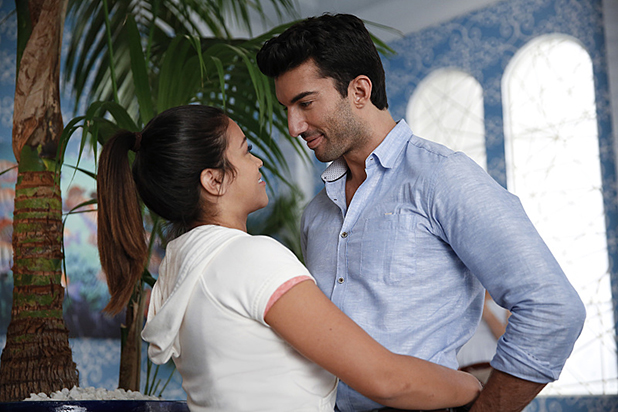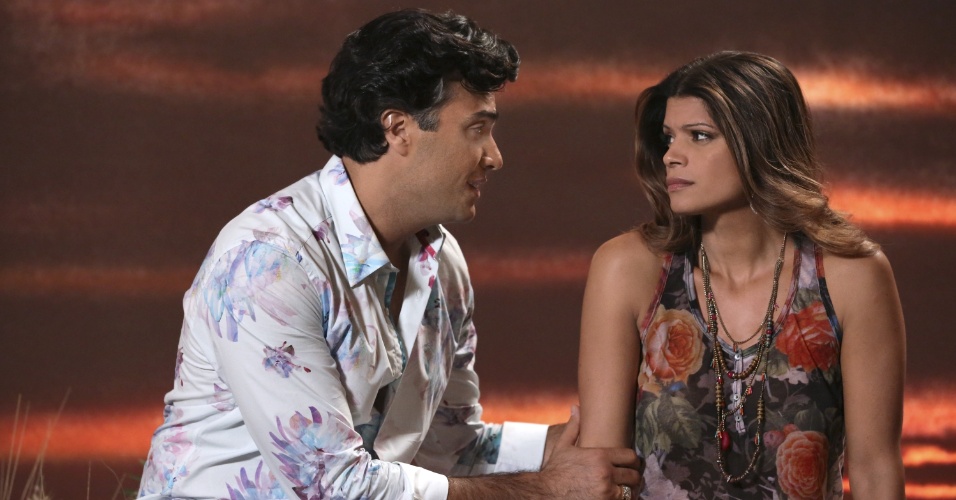How does “Jane the Virgin” present a nuanced view of sexuality?
Jane the Virgin (2015) is a television comedy based on a Venezuelan telenovela (Juana la Virgen, 2002) that airs on The CW. The plot is centered on the life of Jane Villanueva (Gina Rodriguez), a devout Catholic who is mistakenly artificially inseminated during a routine pap smear. In classic telenovela-style, a love triangle quickly forms between Jane, her fiancé Michael (Brett Dier), and Rafael (Justin Baldoni), the accidental father of the baby. Throw in the romantic pursuits of Jane’s more sexually adventurous mother, Xiomara (Andrea Navedo), and the familiar romantic drama of a telenovela creates itself. However, Jane the Virgin approaches sexuality in a way that is distinct from both comedic and telenovela genres.

Jane’s character is openly abstinent, but the show does not focus heavily on her abstinence, despite its inclusion in the show’s title, and Jane is treated as a sexual, though not sexually active person. Throughout the first season, there are few times where Jane feels pressured to break her abstinence vow. Jane the Virgin distinguishes itself from other comedic shows and the telenovelas in the distinction it draws between sexual experience and sexuality. While Jane is a virgin, she is not asexual. The show illustrates this idea in many ways—from her passion for writing romantic novellas to skinny-dipping in a hotel pool. She even goes so far as to write Michael an erotic note to which the narrator claims, “Jane is a virgin, not a saint.” The show avoids stereotyping Jane as simply a virgin and allows her to explore sexuality in ways other than sex. By doing so, it presents sexuality on a spectrum, rather than a binary of full-blown virgin or extremely sexually active. This realistic, nuanced perspective is unique in comedies and telenovelas—where sex and sexuality are often conflated.
In addition to separating sex and sexuality, the show also creates a distinction between sexuality and self-worth. Jane’s mother, Xiomara, finds herself pledging abstinence for a period of time. She is instructed to use the time to discover her own self worth in relationships. While she eventually breaks her vow, Xiomara still completes an arc of self-growth that exists outside of her sexuality. She gains the self worth that she was advised to seek, but she does so while also accepting sex as a part of her life instead of a defining feature of her character. Furthermore, in her romantic relationships, she reaches the understanding that she is deserving of a healthy and loving relationship regardless of whether it involves sex, but also recognizes that she is in control of her sexuality and should not feel pressured to be fully abstinent or extremely sexual.

The balance that is created by contrasting Xiomara and Jane helps the audience to better understand the idea of sexuality existing on a spectrum rather than on one extreme or the other. This adds a complexity to the characters and is a major reason why Jane the Virgin can remain relatable despite its wild, eccentric plot lines. The characters, while caught in the midst of an international and ongoing crime investigation, see and react to these problems in ways that real people react to major problems in their own lives. The show is nuanced: it sees the comedy in the drama and the profound feelings behind the jokes. Jane the Virgin’s stance on sexuality - or lack thereof - helps the viewers to empathize with the characters and aides in the continual success of the series.

